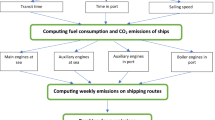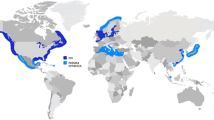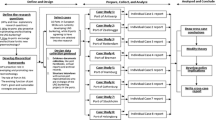Abstract
Located between the Pacific and Atlantic Oceans, the Panama Canal has reduced both transit time and costs for the container shipping industry in particular. Once canal expansion is completed, container carriers will immediately face emission reduction demands in North America, and will be required to address problems regarding hub port selection for transshipments in the wider Caribbean region (WCR). This will occur because of the upsizing of mother vessels in trunk routes and the global promotion of the use of liquefied natural gas (LNG) as ship fuel under what is known as the clean-lines strategy. As a result, canal expansion will facilitate changes in ship size related to hub selection, pollutant emissions and the use of fuel alternatives which must be addressed by carriers, in particular in regards to the emission control area (ECA) requirements of North America, the US Caribbean and the WCR region. In this study, we use the activity-based method to estimate pollutant emissions and trunk route deployments from Asia to the East Coast of North America. The results show that slow-steaming yields substantially reduced emissions, and that the upsizing of mother vessels after canal expansion will increase pollution emissions accordingly. However, shipping companies that use hub-port selection to plan intercontinental transshipment strategies and conform to a fuel-efficient strategy can substantially reduce emissions. The innovation of this article is in its analysis of actual fuel use, emissions reductions and hub selection in the aftermath of canal expansion. The implementation of this strategy requires converting from heavy oil to LNG fuels, as well as changes in shipbuilding technology, port industries, related infrastructure and regulations on environmental protection of various governments.



Similar content being viewed by others
References
Alphaliner. (2012) Weekly Newsletter, Volume 2012, Issue 1–52.
BRS. (2012) Shipping and Shipbuilding Markets Annual Review 2012. Paris: BRS.
Buhaug, O. et al (2009) Prevention of Air Pollution from Ships – Second IMO GHG Study. London: International Maritime Organization.
Chang, C.C. and Wang, C.M. (2010) Assessment of the impact of a carbon tax on speed reductions and operating costs in shipping. Transportation Planning Journal 39 (4): 441–460.
Chang, C.C. and Wang, C.M. (2012) Evaluation of the effects of green port policy: Case study of Kaohsiung Harbor in Taiwan. Transportation Research Part D 17 (3): 185–189.
Corbett, J.J. and Koehler, H.W. (2003) Updated emissions from ocean shipping. Journal of Geophysical Research 108 (4): 4650–4665.
DNV. (2013) ‘LNG as ship fuel’; ‘LNG FUEL-What’s current & What’s next ?’, Oshima ECO-Ship 2020, Det Norske Veritas AS. http://www.dnvgl.com/news-events/features/lng-as-ship-fuel.aspx, accessed 12 December 2013.
Fossey, J. (2012) Containership: Alternative fuels; ‘Clean Lines’. Containerization International 76–77, June 2012.
Hoffmann, P.N., Eide, M.S. and Endresen, O. (2012) Effect of proposed CO2 emission reduction scenarios on capital expenditure. Maritime Policy and Management 39 (4): 443–460.
Hwang, C.C. and Tai, H.H. (2008) Analysis of relative competitiveness among major hub-ports across Taiwan-strait. Journal of the Chinese Institute of Transportation 20 (1): 1–38.
IMO - International Maritime Organization. (2008) MEPC 58/WP. 9. Report of the drafting group on amendments to MARPOL Annex VI and the NOx Technical Code.
IMO - International Maritime Organization. (2009) Second IMO GHG Study 2009 Update of the 2000 GHG Study: Final Report covering Phase I and 2. MEPC 58/INF. 10, 9 April, 2009 London: IMO.
IPCC. (2012) http://www.ipcc.ch/ipccreports/sres/aviation/126.htm#img86, accessed 10 December 2012.
Iannone, F. (2012) A model optimizing the port-hinterland logistics of containers: The case of the campania region in southern Italy. Maritime Economics & Logistics 14 (1): 33–72.
Johnson, H., Johansson, M., Andersson, K. and Sodahl, B. (2013) Will the ship energy efficiency management plan reduce CO2 emissions? A comparison with ISO 50001 and the ISM code. Maritime Policy and Management 40 (2): 177–190.
Kumar, S., Kwon, H.T., Choi, K.H., Lim, L., Cho, J.H. and Tak, K. (2011) LNG: An eco-friendly cryogenic fuel for sustainable development. Applied Energy 88 (12): 4264–4273.
Lack, D.A., Thuesen, J. and Elliot, R. (2012) Investigation of Appropriate Control Measures (Abatement Technologies) to Reduce Black Carbon Emissions from International Shipping, Study Report and Prepared by Litehauz, ERRIAZ.
Laxe, F.G., Seoane, M.J.F. and Montes, C.P. (2012) Maritime degree, centrality and vulnerability: Port hierarchies and emerging areas in containerized transport (2008–2010). Journal of Transport Geography 24: 33–44.
Liao, C.H., Tseng, P.H. and Lu, C.S. (2009) Comparing carbon dioxide emissions of trucking and intermodal container transport in Taiwan. Transportation Research Part D 14 (7): 493–496.
Liao, C.H., Lu, C.S. and Tseng, P.H. (2011) Carbon dioxide emissions and inland container transport in Taiwan. Journal of Transport Geography 19 (4): 722–728.
Maloni, M., Paul, J.A. and Gligor, D.M. (2013) Slow steaming impacts on ocean carriers and shippers. Maritime Economics & Logistics 15 (2): 151–171.
Marucci, S.D. (2012) The expansion of the Panama Canal and its impact on global CO2 emissions from ships. Maritime Policy and Management 39 (6): 603–620.
McCalla, R.J. (2008) Container transshipment at kingston, Jamaica. Journal of Transport Geography 16 (3): 182–190.
Molitor, E., Algell, J., Bakosch, A. and Forsman, B. (2012) Feasibility Study on LNG Fuelled Short Sea and Coastal Shipping in the Wider Caribbean Region. SSPA Report, 2012-12-19, No. RE 20126210-01-00-B, TC/1208-05-2100, IMO (International Maritime Organization), UK.
Pagano, A.M., Wang, G.W.Y., Sanchez, O.V. and Ungo, R. (2013) Impact of privatization on port efficiency and effectiveness: Results from Panama and US ports. Maritime Policy and Management 40 (2): 100–115.
Song, D.P. and Xu, J. (2012) An operational activity-based method to estimate CO2 emissions from container shipping considering empty container repositioning. Transportation Research Part D 17 (1): 91–96.
Stopford, M. (2002) Is the drive for ever bigger containerships irresistible? CI Shipping Forecasting Conference, 25 April 2002, Clarkson Research.
Tzannatos, E. (2010) Costs and benefits of reducing SO2 emissions from shipping in the Greek seas. Maritime Economics & Logistics 12 (3): 280–294.
Tai, H.H. (2012) The influence on transshipment function of kaohsiung port by the trunk route developments in the East Asia and cross-strait direct shipping. Transportation Planning Journal 41 (4): 435–463.
Tai, H.H. and Hwang, C.C. (2007) Hub port selection factors for container carriers across Taiwan-strait. Transportation Planning Journal 36 (1): 31–62.
Tai, H.H. and Lin, D.Y. (2013) Comparing the unit emissions of daily frequency and slow steaming strategies on trunk route deployment in international container shipping. Transportation Research Part D: Transport and Environment 21: 26–31.
TRI-ZEN. (2012) LNG markets perspective. TRI-ZEN LNG Perspective. January 2012, 1–11.
UNCTAD. (2012) Review of Maritime Transport, United Nations Conference on Trade and Development, United Nations publication, New York.
UNCTAD. (2013) Review of Maritime Transport, United Nations Conference on Trade and Development, United Nations publication, New York.
Ungo, R. and Sabonge, R. (2012) A competitive analysis of Panama Canal routes. Maritime Policy and Management 39 (6): 555–570.
Winnes, H. and Fridell, E. (2010) Emissions of NOx and particles from maneuvering ships. Transportation Research Part D 15: 204–211.
Acknowledgements
The author would like to acknowledge the National Research Council, Taiwan, ROC, for providing partial funding support under contract number NSC-102-2410-H-022-011. The contents of the article remain the sole responsibility of the author.
Author information
Authors and Affiliations
Rights and permissions
About this article
Cite this article
Hui-Huang, T. A comparative study on pollutant emissions and hub-port selection in Panama Canal expansion. Marit Econ Logist 17, 163–178 (2015). https://doi.org/10.1057/mel.2014.15
Published:
Issue Date:
DOI: https://doi.org/10.1057/mel.2014.15




